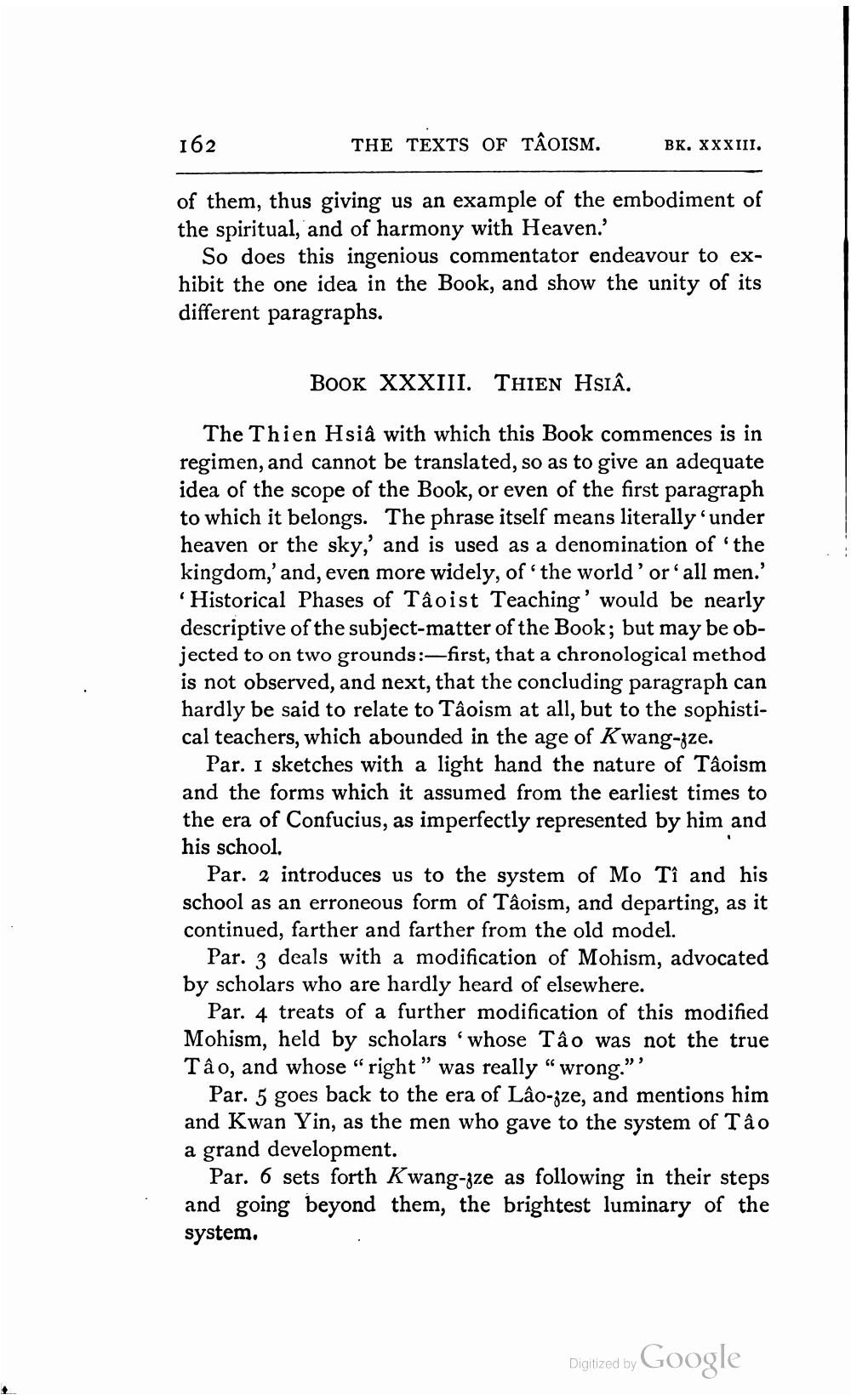________________
THE TEXTS OF TAOISM.
of them, thus giving us an example of the embodiment of the spiritual, and of harmony with Heaven.'
So does this ingenious commentator endeavour to exhibit the one idea in the Book, and show the unity of its different paragraphs.
162
BK. XXXIII.
BOOK XXXIII. THIEN HSIA.
The Thien Hsiâ with which this Book commences is in regimen, and cannot be translated, so as to give an adequate idea of the scope of the Book, or even of the first paragraph to which it belongs. The phrase itself means literally 'u 'under heaven or the sky,' and is used as a denomination of 'the kingdom,' and, even more widely, of 'the world' or ' all men.' 'Historical Phases of Tâoist Teaching' would be nearly descriptive of the subject-matter of the Book; but may be objected to on two grounds:-first, that a chronological method is not observed, and next, that the concluding paragraph can hardly be said to relate to Tâoism at all, but to the sophistical teachers, which abounded in the age of Kwang-zze.
Par. I sketches with a light hand the nature of Tâoism and the forms which it assumed from the earliest times to the era of Confucius, as imperfectly represented by him and his school.
Par. 2 introduces us to the system of Mo Tî and his school as an erroneous form of Tâoism, and departing, as it continued, farther and farther from the old model.
Par. 3 deals with a modification of Mohism, advocated by scholars who are hardly heard of elsewhere.
Par. 4 treats of a further modification of this modified Mohism, held by scholars whose Tâo was not the true Tâo, and whose "right" was really "wrong."
Par. 5 goes back to the era of Lâo-zze, and mentions him and Kwan Yin, as the men who gave to the system of Tâo a grand development.
Par. 6 sets forth Kwang-ze as following in their steps and going beyond them, the brightest luminary of the system.
و رو
Digitized by Google




